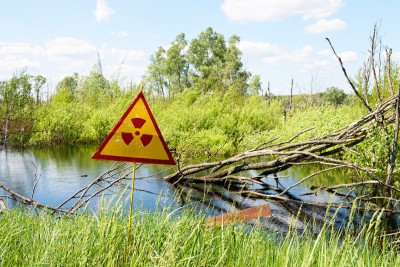
The 1986 Chernobyl nuclear power plant disaster was the worst nuclear accident in history. An explosion at the plant, in what is now Ukraine, released radioactive particles hundreds of miles in every direction.
Now, more than a quarter-century later, the study of some victims exposed to ionizing radiation from that accident is yielding new information about how radiation-induced thyroid cancer develops. It is estimated that more than 6,000 cases of thyroid cancer were caused by the disaster.
“The Chernobyl accident is a clear example of the health consequences experienced by a large population exposed to radioactive iodine,” says Memorial Sloan Kettering physician-scientist James A. Fagin. “The people who were exposed, especially those who were children at the time, have been monitored very closely, and there’s been a lot of interest to see what happens to their risk of cancer over time.”
An international study, led by Dr. Fagin in collaboration with computational biologist Christopher Mason from Weill Cornell Medical College, is reporting the first comprehensive genomic analysis from patients who developed thyroid cancer after exposure to radiation from Chernobyl. An expert in thyroid cancer, Dr. Fagin is Chief of Memorial Sloan Kettering’s Endocrinology Service and an investigator in the Human Oncology and Pathogenesis Program.
Children Were the Most Affected
Most of the people in the study were under the age of ten at the time of the accident and developed thyroid cancer as adolescents or young adults. “There’s no question that the frequency of cancer in this group of people is many times what it would have been in a population not exposed to radiation,” Dr. Fagin says.
When the explosion occurred, radioactive iodine isotopes (unstable atoms that give off radiation) were released into the atmosphere. Those isotopes fell onto the grass, which was then ingested by dairy cattle. They also fell onto other crops and entered the food supply, including the maternal milk for breast-fed infants.
“The thyroid gland is very efficient at trapping iodine, particularly in children,” Dr. Fagin says.
Iodine-131, one of the main isotopes that was released, is not very stable and half of it had decayed after a little more than a week. Therefore, although exposure was high, it lasted for a relatively short period of time.
Characterizing the Genomic Changes
The investigators analyzed the genomic changes in DNA that was taken from the tumors of 26 children and young adults who had thyroid cancer. “Because we know the exact age of all the children at the time of exposure and because they have been studied very closely afterward, we consider this to be a well-curated population of patients,” Dr. Fagin explains.
The investigators found that the tumors contained so-called fusion oncogenes that result when DNA breaks apart, swaps places, and fuses back together. Ionizing radiation is known to cause DNA breaks, which is the mechanism by which radiation induces cancer.
“We found that all of these fusion oncogenes fell into particular functional classes,” he says. “They tend to be activated receptors or activated signaling proteins of pathways that are known to induce cancer. To a large extent, the oncogenes implicated were ones that were already known to play a role in thyroid cancer.
“What’s really remarkable is that in every single one of these cases, we were able to find the driver mutation — the actual genetic change that caused the cancer,” he says. “That’s not very common in most cancer studies, even when you sequence the entire genome of the tumors.
Lessons Learned, but Questions Remain
“The study’s findings reveal two important things,” Dr. Fagin says. “One, that radiation causes a particular type of genetic damage that is associated with characteristic cancer genes; and two, that those genes turn on the activities of pathways that are critical for the formation of thyroid cancer.”
So far there has been no definitive link to Chernobyl exposure and the development of other cancers. “But it’s still early days,” Dr. Fagin concludes. “For thyroid cancer, the latency, or time between exposure and cancer, is shorter than we would have predicted. For other cancers, it’s possible that we could see increases in the future.
The study was reported on November 1 in the Journal of Clinical Investigation.

